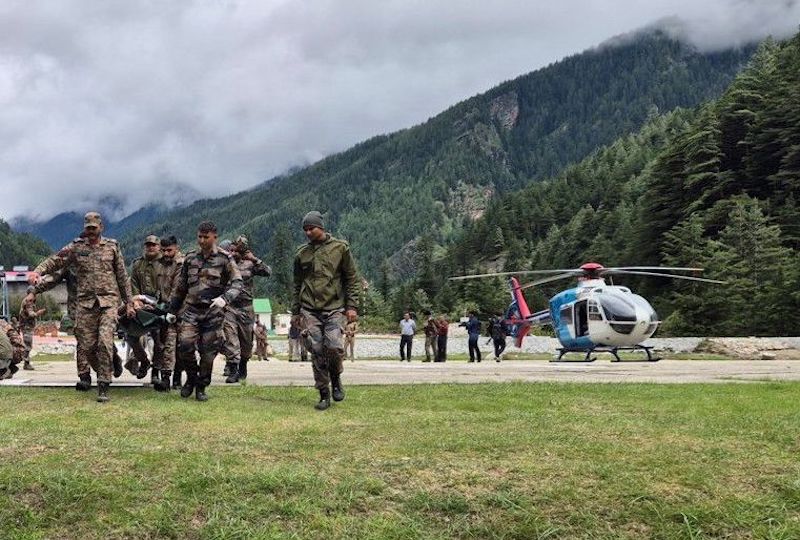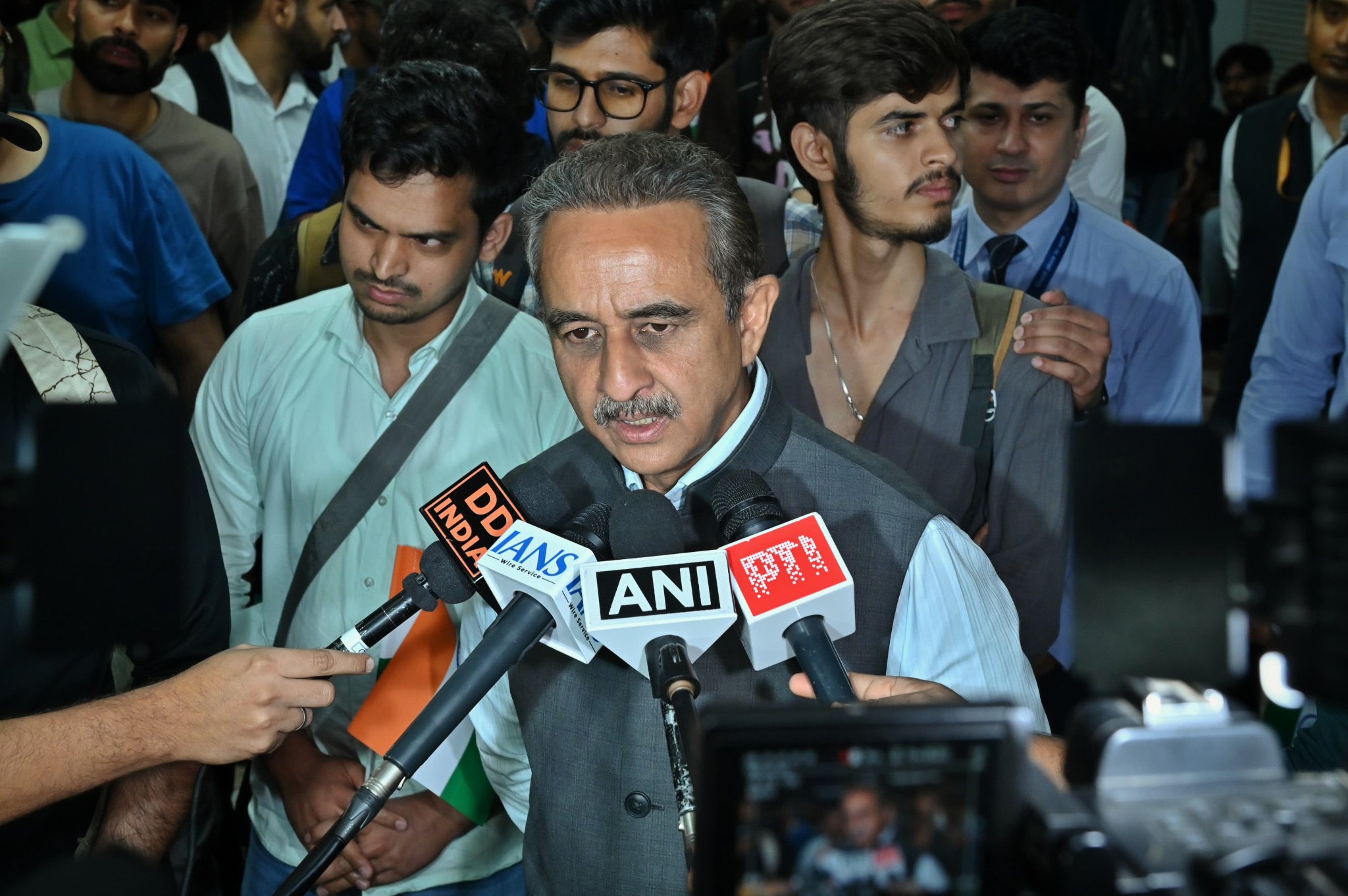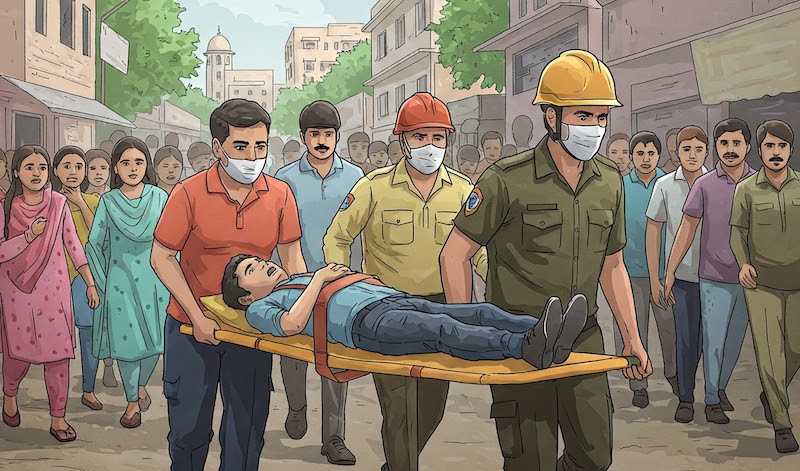 This AI-enhanced screenshot of an amateur video shows the town of Dharali in Uttarakhand’s Uttarkashi district hit by flash floods after a cloudburst.
This AI-enhanced screenshot of an amateur video shows the town of Dharali in Uttarakhand’s Uttarkashi district hit by flash floods after a cloudburst.
Dehradun/New Delhi: A devastating cloudburst struck the remote village of Dharali in Uttarakhand’s Uttarkashi district on Tuesday, which unleashed torrential flash floods that have claimed at least four lives and left more than 50 people missing. The disaster, which occurred at 1.45pm, has prompted one of the largest rescue operations in the region’s recent history, with the Indian Army leading efforts despite sustaining significant casualties among its own personnel.
The sudden deluge transformed the typically serene Kheer Ganga river route into a raging torrent, sweeping away houses, hotels, and vehicles in its path. The flooding created an artificial lake after partially blocking the main Bhagirathi river, submerging a government helipad and cutting off vital transportation links.
District officials estimate that between 20 and 25 hotels and homestays – primarily serving pilgrims on the Gangotri route – have been completely destroyed. The ancient Kalpkedar temple, a significant local landmark, has also suffered extensive damage. Roads connecting several villages have either been washed away entirely or remain blocked by debris, isolating communities across the region.
Local residents described scenes of terror as walls of water and mud crashed through their settlement. Many fear that dozens of people remain buried beneath the rubble, with rescue teams racing against time to locate survivors.
Army mounts heroic rescue despite own losses
The Army responded within 10 minutes of the disaster, deploying 150 personnel under Colonel Harshvardhan of the 14 Rajputana Rifles battalion. However, the military’s own Harshil camp bore the brunt of the flooding, with nine to eleven soldiers now missing and the facility suffering extensive damage.
Despite these losses, Army units alongside the Ibex Brigade have rescued at least 20 civilians in the initial hours. The most severely injured have been evacuated to military medical facilities in Harshil for treatment. Additional columns are being deployed as weather conditions permit, though collapsed bridges, ongoing landslides, and heavy rainfall continue to hamper helicopter operations.
The National Disaster Response Force and Indo-Tibetan Border Police have deployed multiple teams to work alongside state disaster response units and local authorities in the expanding search and rescue operation.
उत्तरकाशी- धराली गांव के ऊपर बादल फटा।
— Ajit Singh Rathi (@AjitSinghRathi) August 5, 2025
बादल फटने से पूरा धराली मार्केट और धारली गांव चपेट में आया।
60 लोगों के लापता होने की सूचना।। pic.twitter.com/tdGJfv19pR
State declares emergency
The Uttarakhand chief minister, Pushkar Singh Dhami, has ordered the closure of all schools and anganwadi centres in the affected districts of Chamoli, Rudraprayag, Almora, Haridwar, and Pithoragarh. The India Meteorological Department has issued a red alert warning of continued extremely heavy rainfall across the region.
Emergency helpline numbers have been established for affected residents, while the state government has mobilized all available resources for rescue and relief operations. “The situation is being monitored closely. SDRF, NDRF, and district teams are working on a war footing,” Dhami stated.
Climate change amplifies Himalayan woes
While monsoon-related flooding occurs regularly in Uttarakhand between June and September, climate scientists warn that global warming is intensifying both the frequency and severity of such extreme weather events. The World Meteorological Organization has characterized these increasingly unpredictable flood and drought cycles as clear indicators of climate change impacts on the Himalayan water system.
The disaster has reignited calls for improved early warning systems and better integration of artificial intelligence-driven weather forecasting to provide more accurate and timely alerts to vulnerable communities. Current gaps in disaster notification systems have been identified as contributing factors to the scale of the tragedy.
Uttarakhand’s fragile mountain ecosystem faces particular vulnerability to extreme weather events, with rapid urbanization and infrastructure development in high-risk areas potentially exacerbating the impact of natural disasters. The state has experienced several major flooding incidents in recent years, including the catastrophic 2013 floods that killed thousands of people.
Rescue operations continue
Search and rescue operations remain active across the affected area, with teams working around the clock despite challenging conditions. Weather forecasts predict continued heavy rainfall, complicating efforts to reach isolated communities and hampering the deployment of aerial rescue assets.
The full extent of casualties and damage remains unclear as communication links to several villages remain severed. Government agencies have urged residents in affected areas to remain indoors and follow official safety advisories as the situation continues to evolve.










